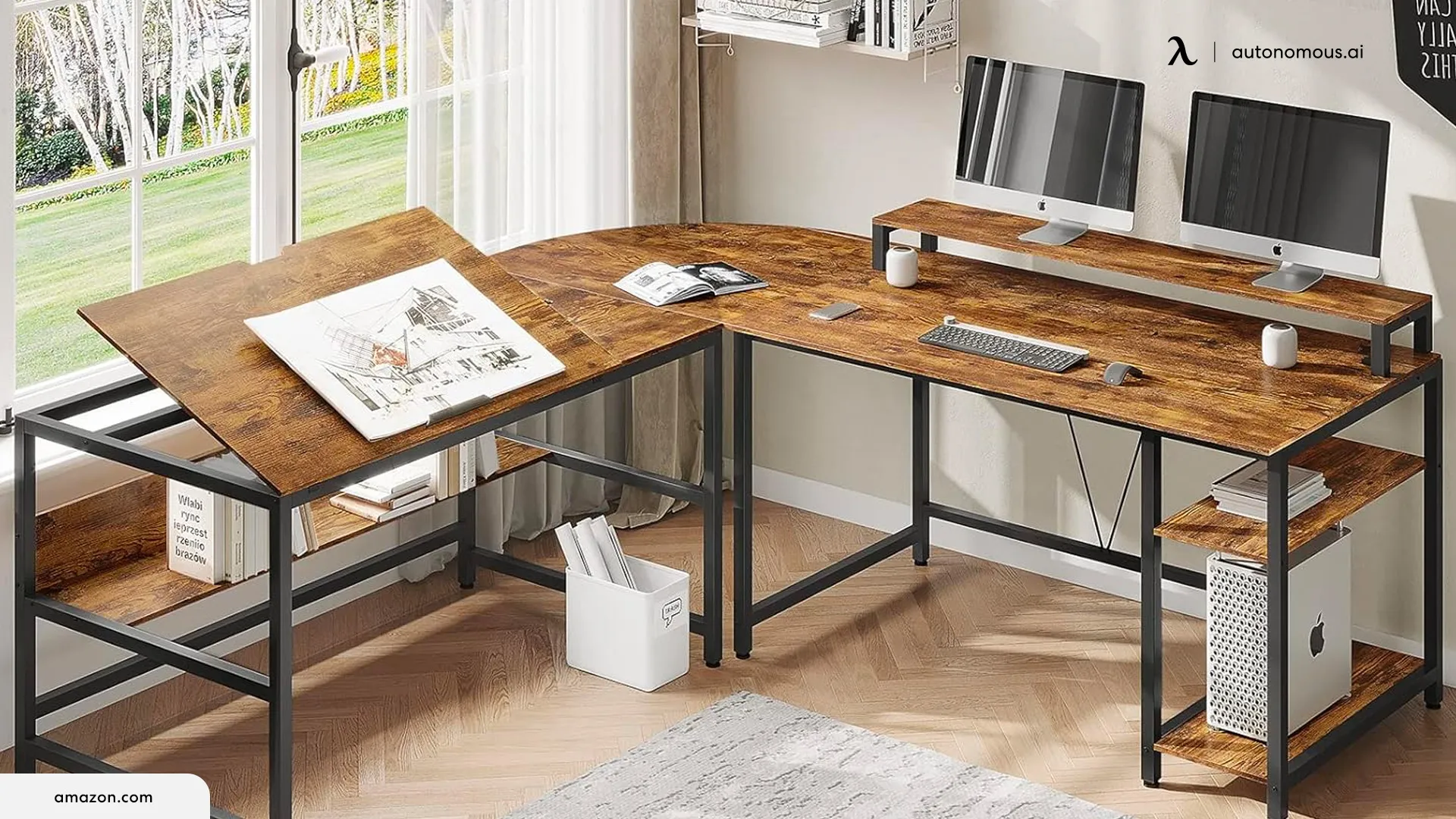
Drafting Desk Dimensions: Finding Your Perfect Workspace
Table of Contents
When it comes to creating an efficient and comfortable workspace, the dimensions of your drafting desk are crucial. Drafting desk dimensions refer to the measurements of the standard office desk height and surface area, which can significantly impact your productivity and comfort. Choosing the right dimensions ensures you have enough space to work without feeling cramped, whether you're an artist, architect, or student.
In this article, we'll delve into how different desk styles can influence your workspace setup. By the end of this guide, you'll be equipped with the knowledge to choose the ideal drafting desk that meets your specific requirements and enhances your creative or professional pursuits.
Desk Dimensions Based on Use Case
Choosing the right drafting table dimensions depends on the specific use case, factoring in ergonomics and workspace requirements.
Art Projects and Illustrations
Artists and illustrators often require ample space to spread out their materials, from large canvases and drawing pads to numerous tools and supplies. A drafting desk with a surface area of at least 30" x 42" is typically recommended for art projects. This home office desk size allows for a comfortable working area where you can keep your reference materials, palettes, and drawing tools within easy reach.
Having a larger workspace helps prevent clutter, which can be distracting and impede the creative process. Among drafting table ergonomics, adjustable height is another important feature, as it allows you to work comfortably whether you're sitting or standing, reducing strain on your back and neck during long hours of work.
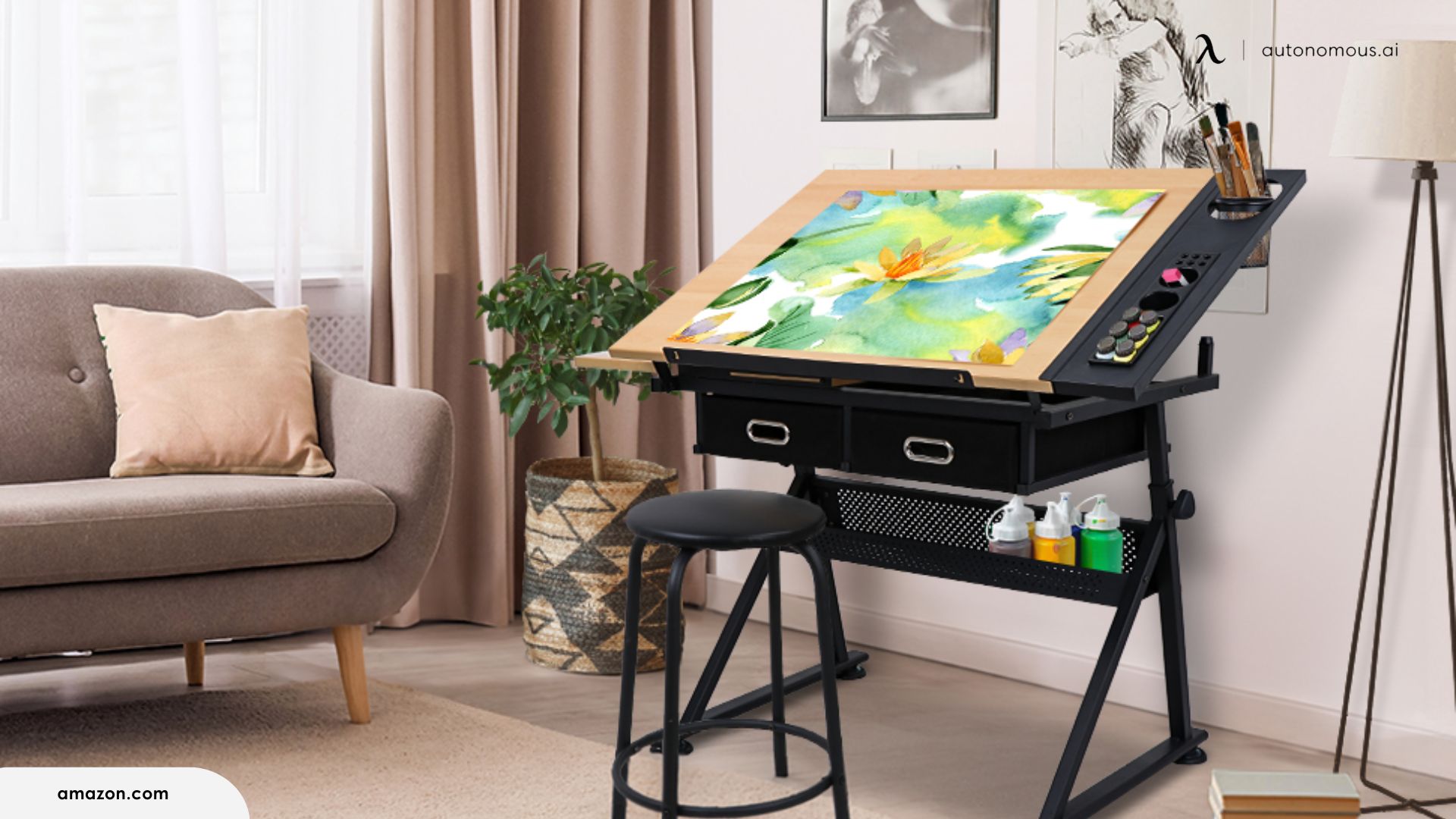
Architectural Plans and Blueprints
Architects and engineers need standing desk drafting tables that can accommodate large sheets of paper, such as blueprints and architectural plans. For this purpose, a desk with a surface area of 37.5" x 48" or larger is ideal. This standard office desk size ensures that even the largest blueprints can be spread out fully, making it easier to view and make corrections.
Adjustable desks are beneficial, as they allow for better ergonomics when working on detailed drawings. A sturdy base is also essential to support the weight of heavy drafting tools and materials, ensuring stability and preventing any wobbling that could disrupt precise work.
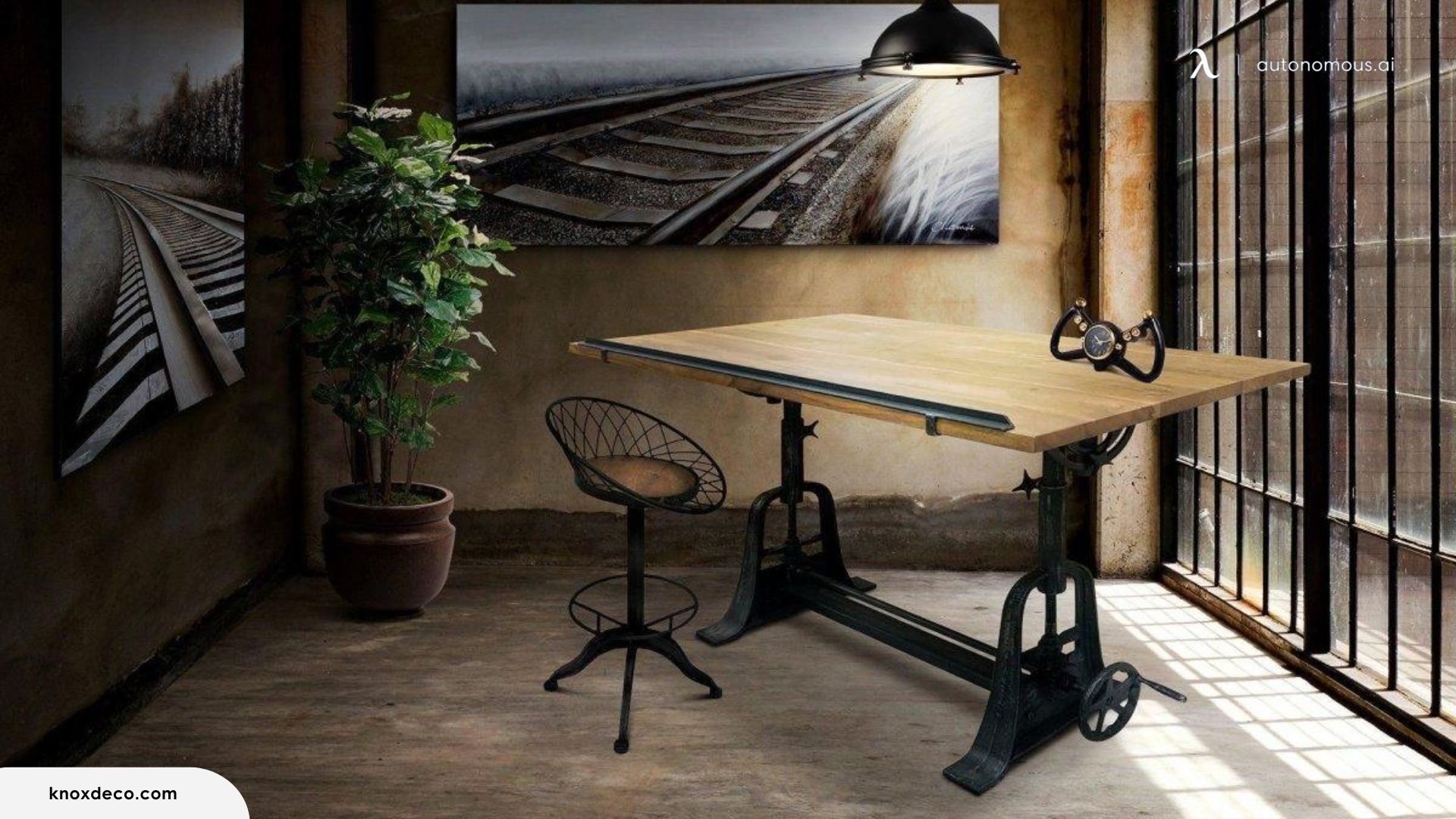
Student Use and Smaller Spaces
For students or those with limited space, finding a drafting desk that fits comfortably into a smaller area is key. A desk with dimensions around 24" x 36" can provide a sufficient workspace without overwhelming a small room. Portable or fold-away drafting desks are excellent options for students, as they can be easily stored when not in use, freeing up valuable space. These desks often come with additional features like built-in storage for supplies and adjustable heights, making them versatile and practical for various tasks, from homework and study sessions to art projects and casual drawing.
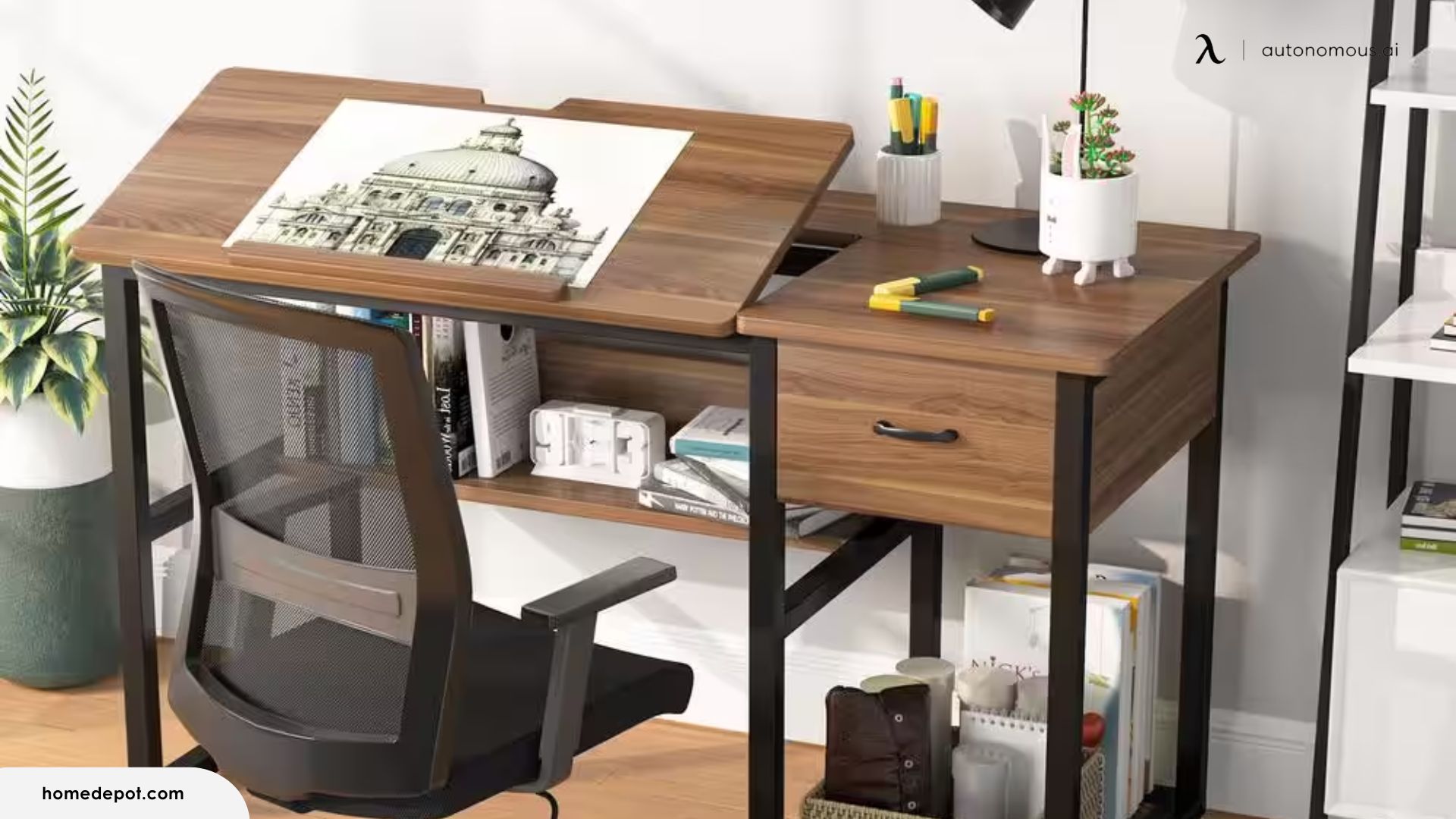
Desk Dimensions Based on Style
Desk dimensions in feet also depend on the style, for example:
Traditional Wooden Desks
Traditional wooden drafting desks offer a classic look and robust construction. These desks typically feature larger dimensions, with surface areas ranging from 30" x 42" to 37.5" x 60". They are often preferred for their durability and aesthetic appeal, fitting seamlessly into home offices or studio environments.
Wooden L-shaped desks usually come with storage options such as drawers or shelves, providing ample space to keep your tools and materials organized. However, their larger size means they require more space, making them suitable for dedicated work areas rather than smaller, multi-purpose rooms.
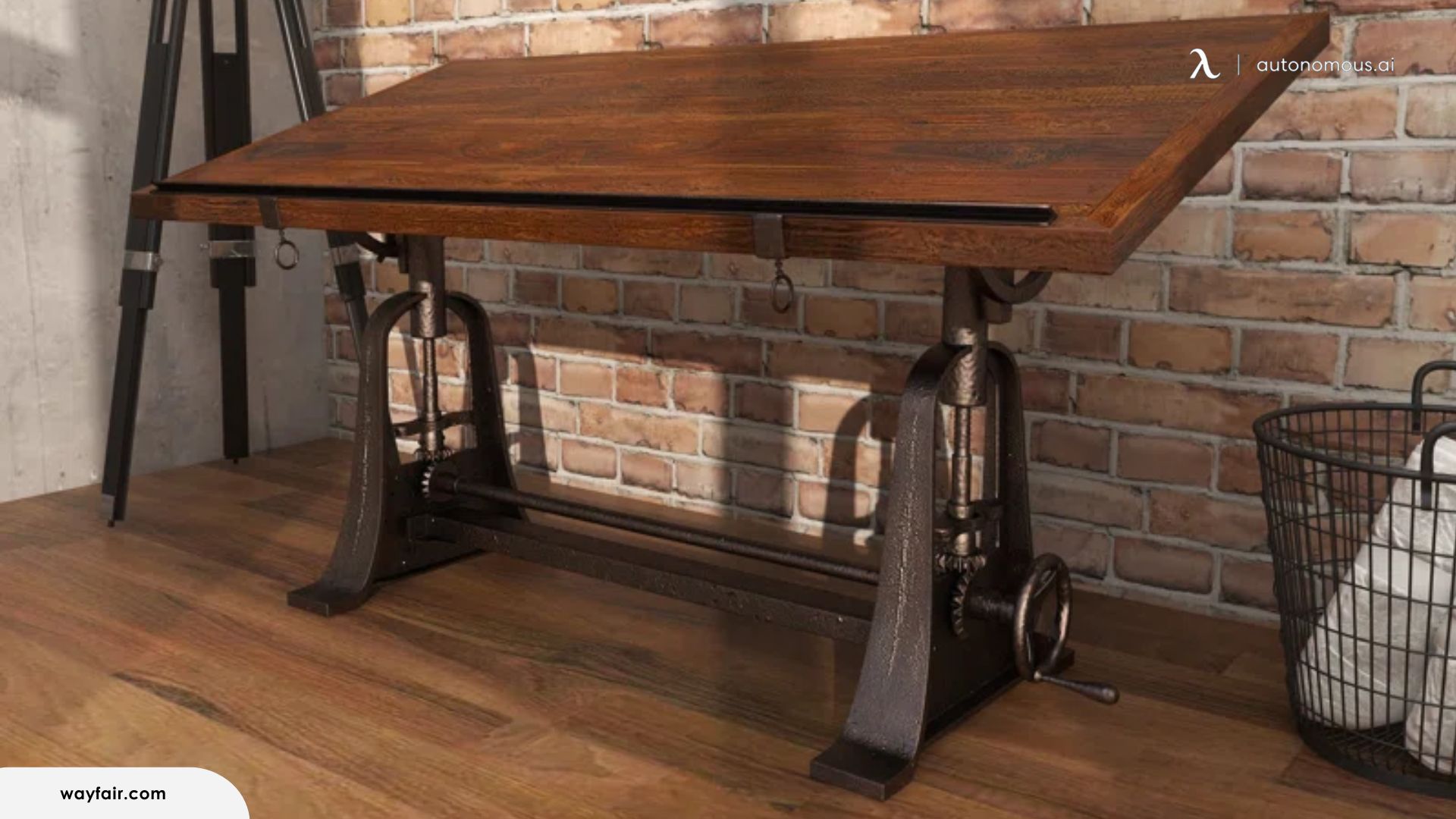
Contemporary Steel Desks
Contemporary steel drafting desks are known for their sleek design and modern functionality. These desks often have adjustable heights and angles, making them highly versatile for different types of work. Steel desks can come in a variety of dimensions, but common sizes include 30" x 42" and 37.5" x 48". Their minimalist design often incorporates clean lines and a professional look, ideal for modern offices or studios.
Steel desks are typically more lightweight and easier to move compared to wooden desks, offering flexibility for those who may need to reconfigure their workspace frequently.
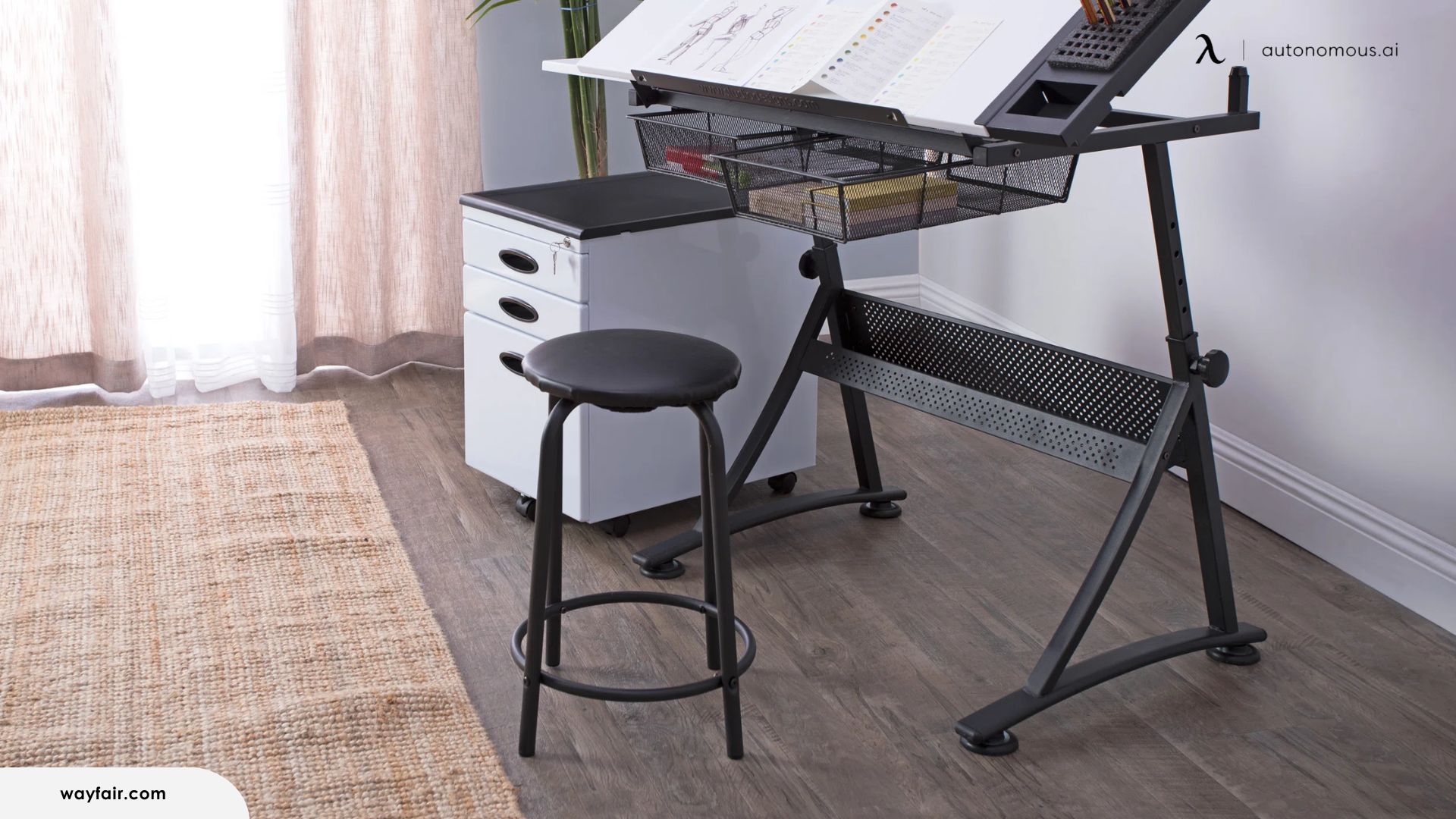
Fold-Away and Portable Desks
These drafting desks are perfect for those who need flexibility and space-saving solutions. Fold-away desks usually have smaller dimensions, around 24" x 36" or slightly larger, and can be folded down to a compact size for easy storage.
Despite their smaller size, many fold-away desks offer features like adjustable angles and built-in storage, making them functional for a variety of tasks. They are particularly useful for students, hobbyists, or anyone working in a small apartment or shared space.
While they may not offer the same stability as larger, permanent desks, their portability and convenience make them an attractive option for many users.
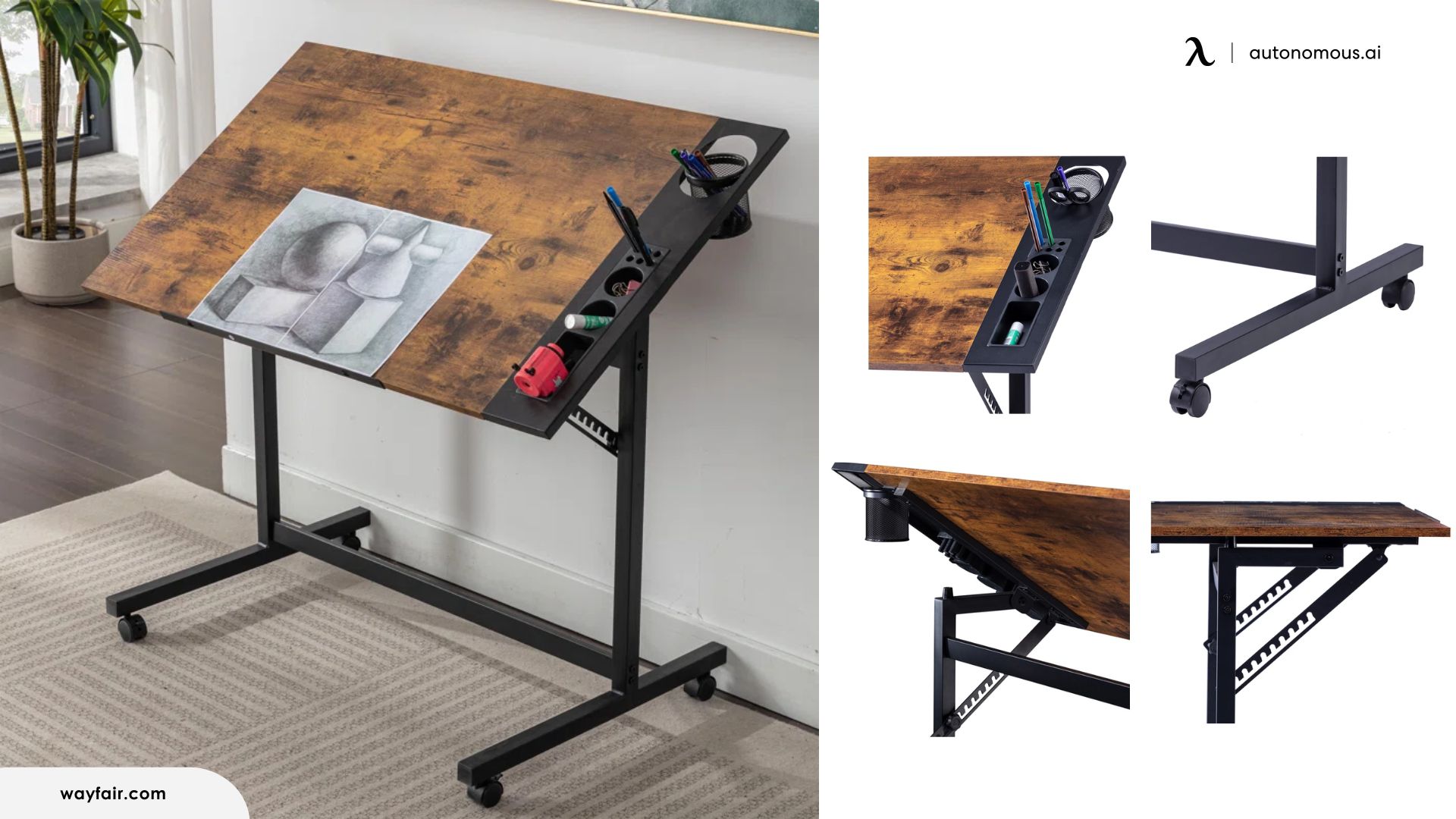
Conclusion
Choosing the right drafting desk dimensions is essential for creating an efficient and comfortable workspace tailored to your specific needs. Whether you're an artist requiring ample space for your materials, an architect needing a large surface for blueprints, or a student with limited room, having an ergonomic standing desk height calculator and understanding the importance of desk dimensions can significantly enhance your productivity and comfort.
By considering the different use cases and styles, you can find the perfect drafting desk that not only fits your space but also supports your creative and professional endeavors. Remember, a well-chosen desk is more than just furniture; it's a vital tool that can inspire and facilitate your best work.
Restez connecté avec nous !
Abonnez-vous à nos mises à jour hebdomadaires pour rester au courant de nos dernières innovations et de l'actualité de la communauté !
Faire connaitre



/https://storage.googleapis.com/s3-autonomous-upgrade-3/production/ecm/230914/bulk-order-sep-2023-720x1200-CTA-min.jpg)

/https://storage.googleapis.com/s3-autonomous-upgrade-3/production/ecm/230824/image_hgsslSZQ_1692157696851_raw-b5b107b7-7720-45f4-b312-6e64060c14af.jpg)